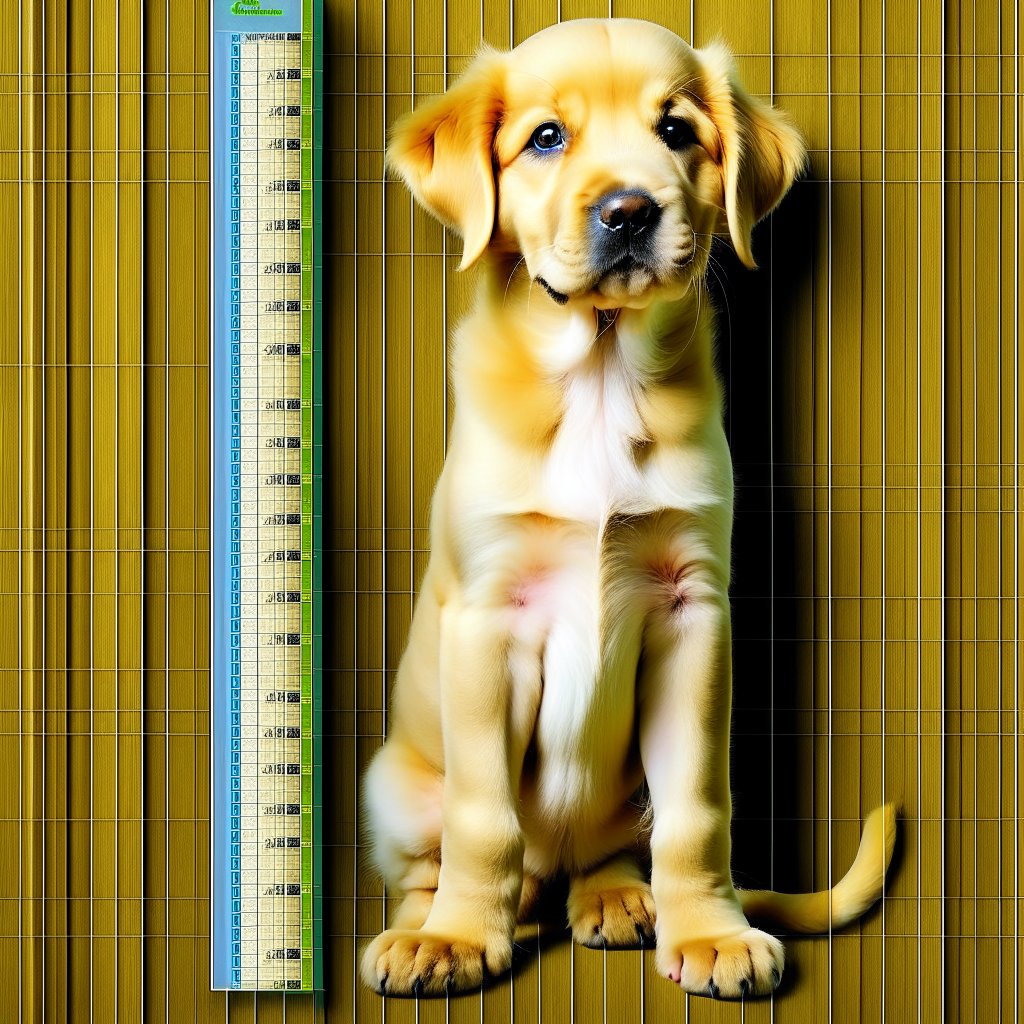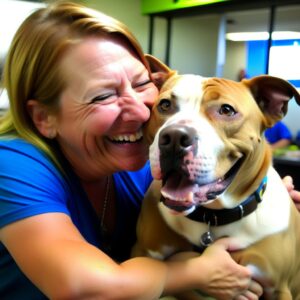How many puppies do golden retrievers have there’s a common misconception floating around that all dogs, including Golden Retrievers, have a standard litter size. Some might say, “Oh, Golden Retrievers always have a litter of eight or more puppies!” But the truth? Well, it’s not quite that simple.
Today, we’re diving deep into the world of Golden Retriever litters to uncover the real story behind how many puppies they actually have.
Understanding Golden Retriever Litter Sizes
Golden Retrievers, known for their friendly demeanor and luscious coats, are often sought after as family pets and even as service dogs. But when it comes to the number of puppies they produce, there’s no one-size-fits-all answer. On average, a Golden Retriever can have anywhere from 6 to 10 puppies in a litter. However, it’s essential to understand that this is just an average.
Some Golden Retrievers may have smaller litters of 4 or 5 puppies, while others might surprise their owners with a larger brood of 12 or more.
Factors Affecting Golden Retriever Litter Size
Now, let’s talk about why there’s such variability in Golden Retriever litter sizes. One significant factor is genetics. Just like with humans, a dog’s genetic makeup plays a crucial role in determining how many puppies they’ll have. If both parents come from lines known for producing large litters, there’s a good chance their offspring will follow suit.
On the other hand, if one or both parents have a history of smaller litters, it’s likely that their puppies will reflect that.
Another factor to consider is the age and health of the mother. In general, younger Golden Retrievers tend to have larger litters than older ones. Additionally, a mother dog’s overall health can impact her fertility and ability to carry a litter to term. Ensuring that your Golden Retriever is in peak physical condition before breeding can help increase the likelihood of a healthy litter.
Litter size is also significantly influenced by nutrition. A well-balanced diet rich in essential nutrients is essential for supporting both the mother’s health during pregnancy and the growth and development of her puppies.
Proper nutrition can help ensure that the mother produces enough milk to feed her litter and that the puppies receive the nutrients they need for healthy growth.
Lastly, environmental factors such as stress can also affect a Golden Retriever’s litter size. High levels of stress during pregnancy can lead to complications that may result in smaller litters or even miscarriages. Providing a calm and supportive environment for your pregnant Golden Retriever can help minimize stress and promote a successful pregnancy.

Managing Golden Retriever Pregnancy
Now that we’ve covered the factors influencing Golden Retriever litter sizes, let’s talk about the crucial steps to manage a Golden Retriever pregnancy. Whether you’re a breeder preparing for a planned litter or a pet owner surprised by an unexpected pregnancy, proper management is essential for the health and well-being of both the mother and her puppies.
Preparing for Pregnancy
Before your Golden Retriever becomes pregnant, it’s essential to ensure that she’s in optimal health. Start by scheduling a pre-breeding check-up with your veterinarian. During this visit, your vet will assess your dog’s overall health and address any concerns or health issues that may affect her ability to conceive or carry a litter.
Your vet may also recommend specific tests, such as genetic screening, to identify any potential hereditary health conditions that could be passed on to the puppies.
In addition to veterinary care, it’s essential to provide your Golden Retriever with a balanced diet rich in essential nutrients. Opt for a high-quality dog food formulated for pregnant and nursing mothers to ensure that she receives the vitamins, minerals, and protein necessary to support a healthy pregnancy.
Avoid giving your dog any supplements or medications without consulting your vet first, as some may be harmful to pregnant dogs or their developing puppies.
Monitoring Signs of Pregnancy
Once your Golden Retriever is pregnant, it’s essential to monitor her closely for signs of pregnancy and changes in her behavior and physical condition. Typical indicators of pregnancy in canines include:
Changes in appetite: Pregnant dogs may experience changes in their appetite, including increased hunger or decreased interest in food.
Weight gain: As the pregnancy progresses, your Golden Retriever may begin to gain weight, particularly around her abdomen.
Changes in behavior: Pregnant dogs may exhibit changes in behavior, such as increased affection or nesting behavior as they prepare for the arrival of their puppies.
Enlarged nipples: As the pregnancy progresses, your dog’s nipples may become larger and more prominent as they prepare for nursing.
If you suspect that your Golden Retriever is pregnant, schedule an appointment with your veterinarian for confirmation. Your vet can perform a physical examination and may recommend additional tests, such as ultrasound or blood tests, to confirm the pregnancy and assess the health of the mother and her puppies.
Providing Proper Care During Pregnancy
During pregnancy, it’s essential to provide your Golden Retriever with proper care and support to ensure a healthy outcome for both her and her puppies. This includes:
Providing a comfortable and safe environment: Create a quiet and cozy space for your pregnant Golden Retriever to rest and relax during her pregnancy. Avoid exposing her to stressful situations or environments that could negatively impact her health or the health of her puppies.
Monitoring her health: Keep a close eye on your dog’s overall health and well-being during her pregnancy. Watch for any signs of illness or discomfort, and contact your veterinarian if you have any concerns.
Providing appropriate exercise: While it’s essential for pregnant dogs to get regular exercise to maintain their health and fitness, it’s also important to avoid excessive strenuous activity or rough play that could potentially harm the mother or her developing puppies. Stick to gentle walks and moderate exercise to keep your dog active without putting undue stress on her body.
Adjusting her diet: As your Golden Retriever’s pregnancy progresses, her nutritional needs will change. Work with your veterinarian to adjust her diet accordingly, ensuring that she receives the proper balance of nutrients to support her own health and the growth and development of her puppies.
Your vet may recommend transitioning her to a specially formulated puppy food during the later stages of pregnancy and while she’s nursing her litter to provide the extra calories and nutrients she needs to support her puppies’ growth and development how many puppies do golden retrievers have.

Golden Retriever Whelping Process
As your Golden Retriever’s pregnancy nears its end, it’s essential to prepare for the whelping process—the term used to describe the birth of puppies. Understanding what to expect during labor and delivery can help you provide the necessary support and care for your dog and her newborns.
Signs of Impending Labor
In the days leading up to labor, your Golden Retriever may exhibit several signs indicating that birth is imminent. These signs include:
Restlessness and nesting behavior: Your dog may become increasingly restless and may start to nest by gathering bedding or blankets to create a comfortable birthing area.
Temperature drop: A drop in your dog’s body temperature (below 100°F) may indicate that labor is imminent. You can monitor your dog’s temperature using a rectal thermometer.
Loss of appetite: Some dogs may experience a decrease in appetite or may refuse to eat altogether as labor approaches.
Panting and pacing: Your dog may pant more frequently or may pace around the house as she experiences pre-labor contractions.
how many puppies do golden retrievers have If you notice any of these signs, it’s essential to prepare for the arrival of the puppies and provide your Golden Retriever with a quiet, comfortable space to give birth.
Setting Up a Whelping Area
Creating a safe and comfortable whelping area is crucial for ensuring a smooth and stress-free birthing process. Here are some tips for setting up a whelping area for your Golden Retriever:
Choose a quiet, draft-free location: Select a quiet and secluded area in your home where your dog can give birth without distractions or interruptions. Avoid areas with high foot traffic or loud noises that could stress out your dog.
Provide soft bedding: Line the whelping area with clean, soft bedding, such as towels or blankets, to provide a
comfortable and warm environment for the mother and her puppies.
Ensure easy access to food and water: Place food and water bowls nearby so that your dog can easily access them
during labor and after giving birth. It’s essential to keep your dog well-hydrated and nourished throughout the birthing process.
Monitor the temperature: Keep the whelping area at a comfortable temperature (around 75°F) to prevent the puppies
from getting too cold. You can use heat lamps or heating pads to provide additional warmth if needed, but be sure to
monitor the temperature closely to prevent overheating.

Supporting Your Dog During Labor
Once labor begins, it’s crucial to provide your Golden Retriever with emotional support and assistance as needed. Here are some ways to support your dog during labor:
Offer encouragement: Stay calm and reassuring as your dog goes through labor. Offer words of encouragement and comfort to help her feel safe and secure.
Assist with the delivery: While most dogs are capable of giving birth without assistance, you may need to step in and
help if your dog experiences difficulties during labor. If you notice that a puppy is stuck or if your dog is struggling to
deliver, contact your veterinarian for guidance.
Monitor the progress: Keep a close eye on your dog throughout the labor process. Note the time each puppy is born and observe for any signs of distress or complications.
Caring for Golden Retriever Puppies
Congratulations! Your Golden Retriever has successfully given birth to a litter of adorable puppies. Now, it’s time to shift
how many puppies do golden retrievers have your focus to caring for these precious new arrivals and ensuring they thrive in their critical first few weeks of life.
Newborn Care Essentials
The first few days of a puppy’s life are crucial for their health and development. Here are some essential tips for caring for newborn Golden Retriever puppies:
Keep them warm: Newborn puppies are unable to regulate their body temperature, so it’s essential to keep them warm. Provide a heat source, such as a heating pad or heat lamp, in the whelping box to maintain a temperature of around
85-90°F during the first week of life.
Monitor their weight: Weigh each puppy daily to track their growth and ensure they’re gaining weight at a healthy rate. Consult your veterinarian if you notice any significant changes in weight or if a puppy fails to gain weight.
Stimulate elimination: Puppies cannot urinate or defecate on their own during the first few weeks of life. After each feeding, gently stimulate the puppy’s genital area with a warm, damp cloth to encourage elimination.
Encourage bonding: Allow plenty of opportunities for the puppies to bond with their mother during the early days. Nursing provides essential nutrients and antibodies that help strengthen their immune systems and promote overall health.
Growth and Development Milestones
As your Golden Retriever puppies grow, they’ll reach several important milestones in their development. What to anticipate in the initial weeks is as follows:
how many puppies do golden retrievers have Eyes and ears open: Puppies’ eyes typically begin to open around 10-14 days of age, followed by their ears. Encourage exploration by providing safe toys and stimulating environments.
Introduction to solid food: Around 3-4 weeks of age, start introducing soft, puppy-formulated food to the puppies’ diet. Begin by offering small amounts mixed with water or puppy formula, gradually transitioning to solid food as they grow.
Socialization: Expose the puppies to various sights, sounds, and experiences to help them develop into well-adjusted adults. Encourage positive interactions with people and other animals to promote socialization and prevent fearfulness.

Conclusion
As we conclude our journey into the world of Golden Retriever breeding and puppy care, it’s essential to reflect on the
valuable insights we’ve gained. From understanding the factors influencing litter sizes to providing proper care during
pregnancy and beyond, we’ve covered a range of topics aimed at helping you become a responsible and
knowledgeable Golden Retriever owner or breeder.
By now, you should have a solid understanding of how many puppies Golden Retrievers typically have and the various
factors that can influence litter size. From genetics and age to nutrition and environmental stressors, there are many
how many puppies do golden retrievers have factors to consider when planning for a litter of Golden Retriever puppies.
We’ve also discussed the importance of proper care during pregnancy, including pre-breeding health checks,
monitoring for signs of pregnancy, and providing a comfortable and supportive environment for your pregnant Golden
Retriever. Additionally, we’ve explored the whelping process and the essential steps to take to ensure a safe and
successful birth for both the mother and her puppies.
Once the puppies are born, we’ve provided valuable guidance on caring for newborns, including keeping them warm,
monitoring their growth and development, and providing proper nutrition and veterinary care. As they grow, it’s essential
to continue to provide socialization and training to help them become well-adjusted and happy adult dogs.












